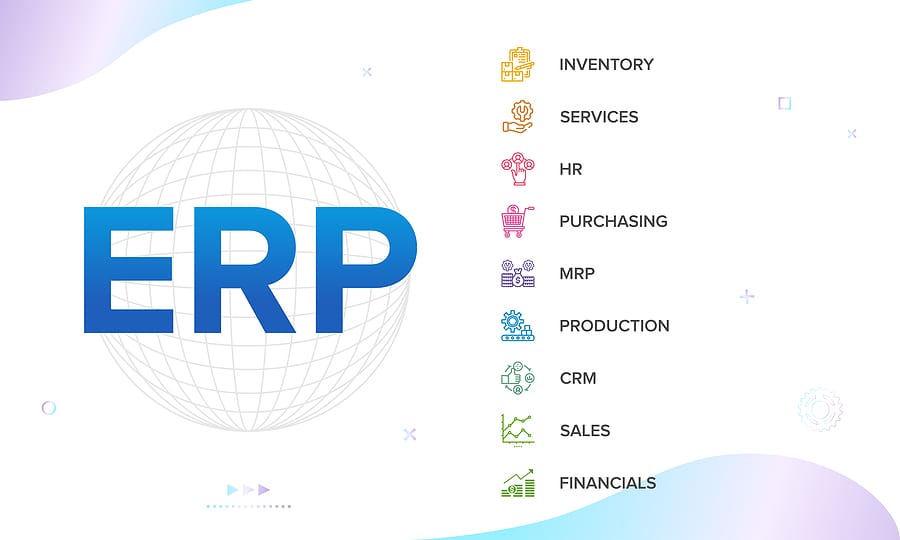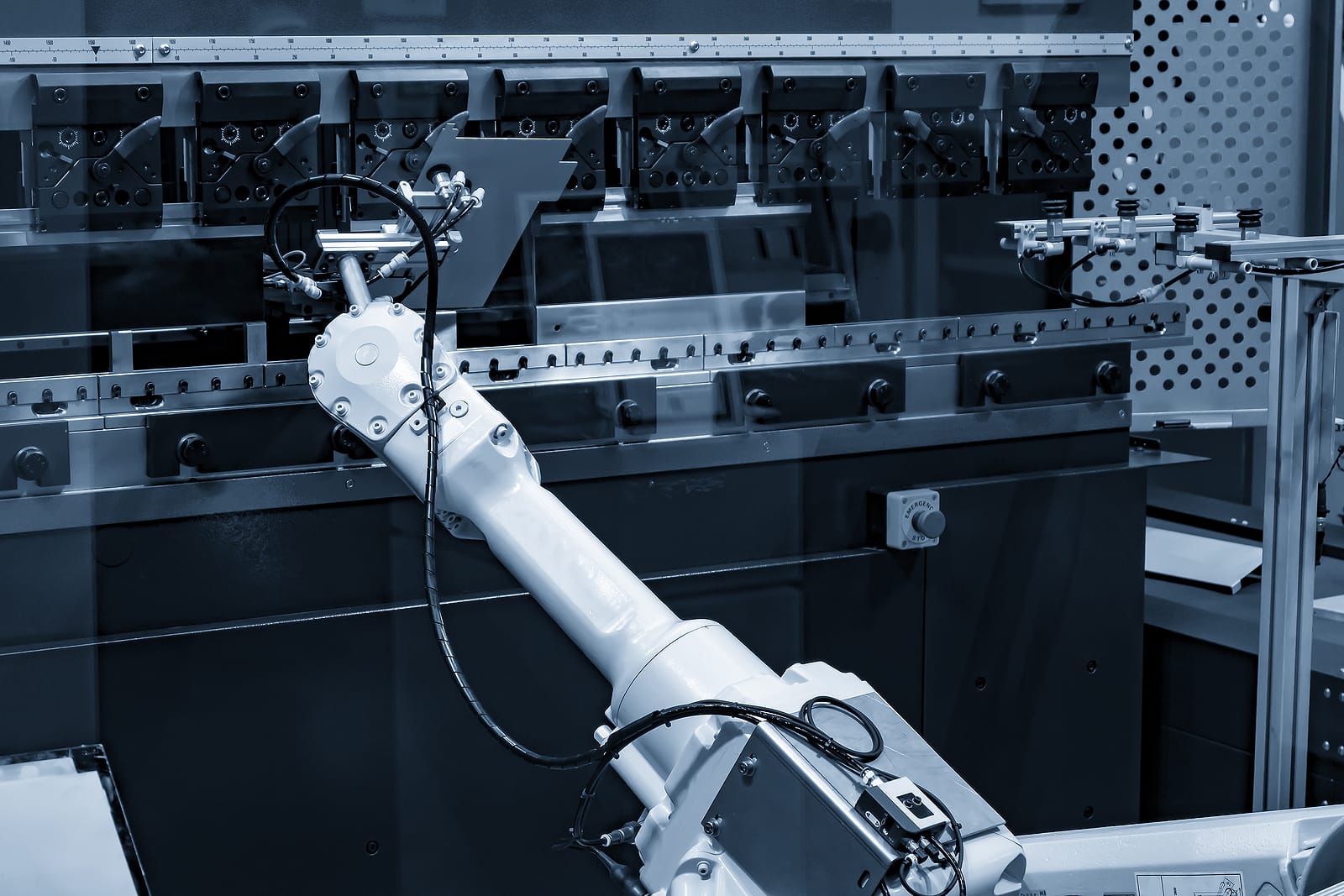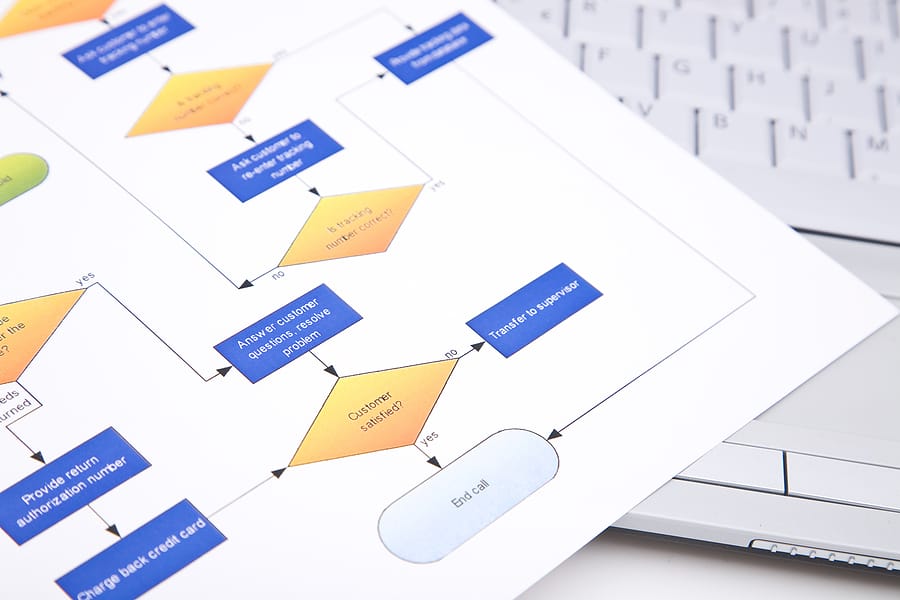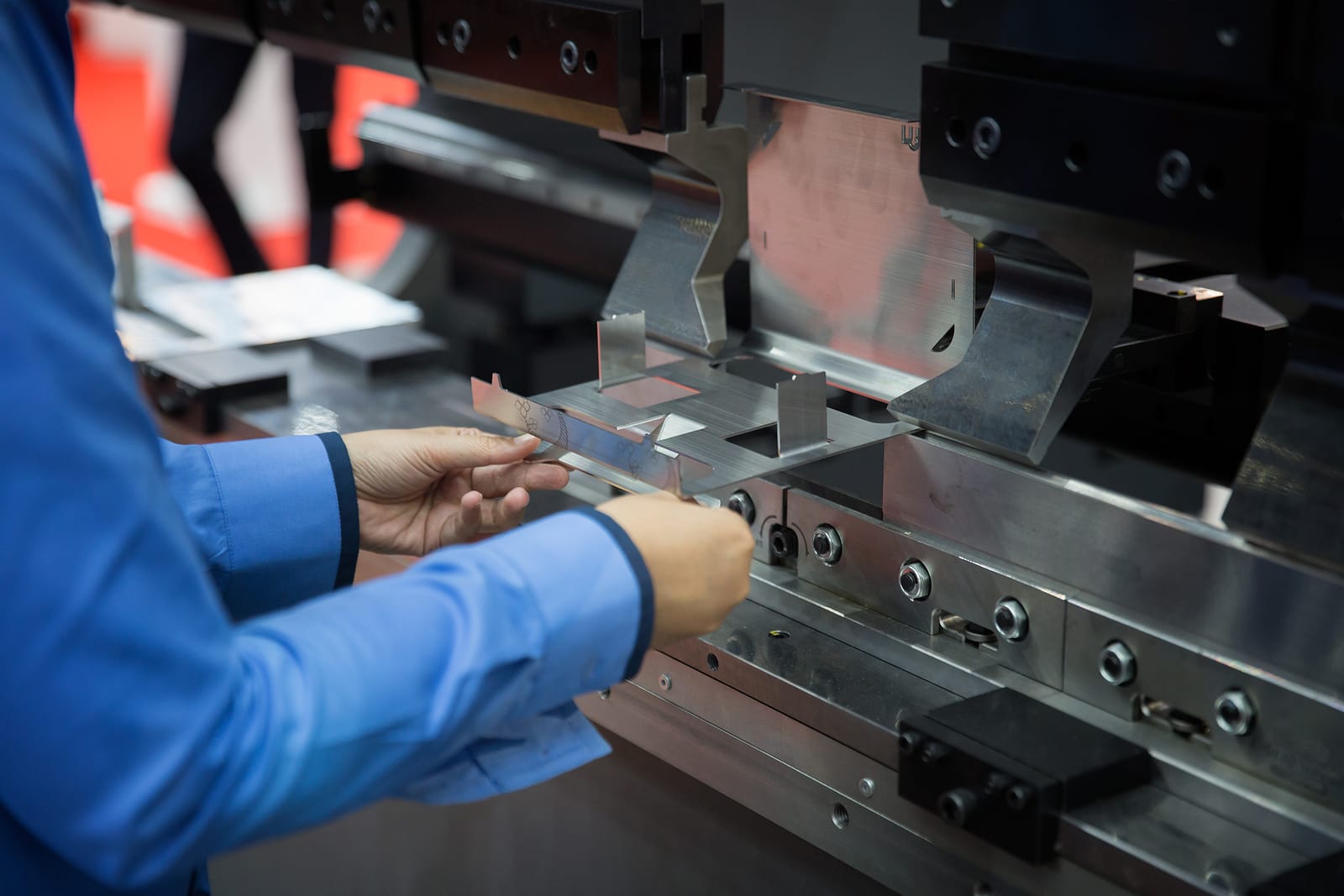In the dynamic world of metalworking, the production floor never stands still. Orders come and go, schedules constantly change, and the challenge of keeping everything running smoothly grows ever larger. If you deal with flexible production daily, you surely recognize this: while your ERP system neatly keeps track of all orders, turning that plan into reality on the shop floor remains a challenge.
Bridging the gap between planning and practice is where Manufacturing Execution Systems (MES) come into play.
But beware: an MES isn't a magical solution you can simply purchase and install. It's an essential function in your factory that can be implemented in various ways, depending on your specific situation.
In this comprehensive guide, we'll explore what MES truly means for metal and sheet metal processing companies. No theoretical tales, but practical insights on how to gain more control over your production, better manage your shop floor, and maintain real-time visibility on your progress. Because ultimately, that's what it's all about: making your production smarter, step by step.

What Is a Manufacturing Execution System?
A Manufacturing Execution System (MES) isn't a traditional product but an essential function in the modern factory. Just as your ERP system manages business processes and your machine controls regulate technical processes, the MES function provides the crucial link between them.
It's all about production information. This information must not only be complete and detailed but also well-managed. You need to read machine data, track orders, measure quality, and share work instructions. If your company struggles with maintaining oversight, creating a real-time schedule, or collecting feedback from the shop floor, then it's time to consider how to implement this MES function.

The Evolution of Production Control: From ERP to MES
The story often starts the same way: your company grows, orders flood in, and you decide to invest in an ERP system. A logical choice—ERP brings structure to your business processes. Your orders are neatly organized, your inventory management is on point, and your financial administration runs smoothly.
But then reality sets in. You notice that what's in your ERP system increasingly diverges from what's actually happening on the shop floor. That rush order that needs to squeeze in, the machine downtime that's longer than planned, or that job requiring more production time than initially estimated. Your ERP system simply isn't built to handle this daily reality.
And you're not alone. Many manufacturing companies reach this point. They have their administrative processes well-organized but miss that crucial real-time connection with the shop floor. It's like the difference between a route planner and live navigation—your ERP tells you where you should go, but not what the actual situation looks like.
The Need for Real-Time Production Data
The move toward real-time production data often stems from concrete problems. Maybe you find delivery times increasingly hard to predict. Or you notice your material usage is higher than calculated but can't pinpoint why. Perhaps you have to redo a lot of production, or quality issues arise that are only discovered late.
And that's not even mentioning the challenges of tracking quality controls or efficiently planning maintenance.


MES in Metalworking: More Than Software
This is where Manufacturing Execution Systems come into play. But don't be misled by the term 'system'—MES is essentially a function, not a product. It's the function that ensures you gain control over what's really happening in your production, at the moment it happens.
How MES Fills the Gaps
Think of MES as the eyes and ears of your production. While ERP focuses on what should happen, MES ensures you know what is actually happening. Here are some practical examples:
- Direct Feedback: Your CNC operator notices a program isn't running smoothly. With MES, they can immediately register this feedback so the planning team can address it for future orders.
- Prioritization: In your welding department, different products are mixed up. MES ensures each welder knows exactly which product has priority and what specific requirements apply.
- Quality Control: Quality measurements can be entered in real-time and linked to specific production orders, improving traceability.
The Daily Impact
For operators, MES brings clarity. No more stacks of paper work orders but digital work instructions that are always up to date. They immediately see which order has priority and automatically receive a notification when materials need replenishing.
Production leaders finally get that complete overview they've always dreamed of. They can see at a glance which machines are running, where delays are occurring, and can adjust immediately if needed. No more endless searching for information—everything is instantly available.
Core Functions of MES
An effective Manufacturing Execution System (MES) for metalworking bridges the gap between planning and production by providing real-time insights and control. At its core, an MES offers four fundamental functions, commonly known as the "Core Four":
1. Work Order Tracking
- Active Management: Monitor and manage production orders on the shop floor.
- Real-Time Visibility: See the status of each work order from start to finish.
- ERP Integration: Align production activities with your ERP system's planning data.
2. Scheduling
- Detailed Planning: Create and adjust daily production schedules based on real-time data.
- Dynamic Rescheduling: Quickly adapt to changes like rush orders or machine downtime.
- Resource Optimization: Allocate machines and personnel efficiently.
Note: While some companies handle scheduling within their ERP system, MES scheduling provides more detailed control over shop floor activities at the operational and even machine level.
3. Overall Equipment Effectiveness (OEE)
- Performance Measurement: Analyze equipment efficiency by tracking availability, performance, and quality.
- Real-Time Monitoring: Access up-to-date OEE data to identify inefficiencies.
- Continuous Improvement: Use OEE insights to enhance productivity.
4. Downtime Tracking
- Incident Logging: Record equipment downtime occurrences, including causes and durations.
- Data Analysis: Identify patterns causing downtime.
- Preventive Actions: Develop strategies to minimize future downtime.
Optional Additional Capabilities
Beyond the Core Four, an MES can offer additional functions tailored to your business needs:
- Quality Management: Real-time quality control and enhanced traceability.
- Work Instructions: Provide operators with digital, up-to-date instructions.
- Inventory Management: Monitor raw materials, work-in-progress, and finished goods.
- Personnel Management: Manage staff skills, training records, and scheduling.
- Maintenance Management: Schedule preventive maintenance and keep maintenance logs.
- Compliance and Reporting: Generate necessary documentation for audits and certifications.
Key Concept: MES is not a one-size-fits-all product; it's a suite of capabilities from which you select what best suits your operations.
Discover the Benefits of MES Integration
Curious how MES can transform your metalworking company? I'd be happy to discuss your project and show how my expertise can help you. Contact me.
The Practical Implementation of MES in Your Company
By now, you know that MES is an essential function in modern production, but how do you implement it concretely? In practice, we see different routes companies can take, each with its own pros and cons. It's like choosing the right tool—what works depends on your specific situation.

Route 1: Extending Your ERP System
Many metal companies first look at their existing ERP system. Logical, because well-known names in our sector like ECI Ridder iQ, MKG, and Bemet offer modules for shop floor control. It feels familiar—you already work with the system, and the integration seems straightforward.
This approach works especially well if your production processes are relatively straightforward. Think of companies that mainly handle standard operations and focus on streamlining the administrative side of production. It's like adding a utility room to your house—you expand what you have, it connects nicely to the existing structure, but it's limited to what's possible within that space.
But there are limitations. ERP systems aren't inherently built for real-time production control. They often lack the flexibility to respond quickly to changes on the shop floor. And machine connectivity? Usually limited or even absent. It's akin to that utility room that works fine for basic tasks but isn't equipped for heavy professional cooking.

Route 2: Specialist Apps for Specific Processes
A second route we increasingly see is the use of specialist applications (e.g. SaaS). For example, PROPOS for production planning or Azumuta for digitizing work instructions. These apps are like precision tools—they do one thing but do it extremely well.
The advantage is clear: you get exactly the functionality you need, developed by people who thoroughly understand your process. A welding app knows precisely what information a welder needs, and a planning app is optimized for juggling orders and capacity.
But here's the challenge: all these systems need to communicate with each other and understand each other. Your ERP system usually isn't designed to act as a central hub between all these specialist apps. It lacks the flexibility to pass on real-time events directly to other systems.
It's like a team where everyone speaks a different language, with the ERP system as an interpreter who only translates once a day. For true digital production, you need systems that understand each other directly and can share updates as soon as something happens on the shop floor. That requires a different approach than what most ERP systems can offer.

Route 3: The Machine-Driven Approach
More and more machine manufacturers offer their own MES functionality. TRUMPF's Oseon or Bystronic's BySoft are prime examples. These systems understand perfectly how their machines work and can respond accordingly.
But here's where the reality of modern metalworking comes into play. The average company doesn't just have a laser machine from TRUMPF or Bystronic—they also have a press brake from Safan, a robot from KUKA, a saw from Kaltenbach, welding equipment from various brands, and perhaps some conventional machines. Additionally, they often have other processes like bending, welding, assembly, or surface treatment.
This diversity makes the machine-driven approach complex. Each system speaks its own language, has its own interface, and generates data in its own format. It's like a meeting where everyone talks over each other in different languages—a lot of valuable information gets lost.
Moreover, focusing solely on machines addresses only the technical side of production. But in practice, it's about much more: work preparation, quality control, material supply, personnel planning. All these aspects need to come together in one streamlined process.

Route 4: The Open Technology Approach
The most flexible—but also most challenging—route is building MES functionality based on open standards and modern IoT technology. This is where the concept of a Unified Namespace (UNS) comes into play—a central 'language' allowing all systems and machines to communicate, regardless of their brand or type.
This approach uses event-driven architecture, where systems respond immediately to production events. If a machine stops, an order starts, or a quality check is performed, this information becomes instantly available to all connected systems via MQTT protocols. No batches, no daily updates—just real-time communication between all parts of your production.
This method gives you maximum freedom. You can build exactly what you need and let the system grow with your company. Adding a new machine? It simply connects to your Unified Namespace. Introducing an extra quality control? The data is immediately available for analysis.
But it does require technical expertise and a long-term vision. It's like creating your own language that all your systems can speak—a lot of freedom, but also more responsibility. You need to think not only about what you need now but also about how your system can evolve with future developments.
Turn Your Production into a Smart Factory
Don't let the competition overtake you. With my expert consultancy and integration services, you can future-proof your production. Learn more about my approach.

The Impact on Your Production Environment
Implementing MES functionality has far-reaching consequences for your entire organization. Let's see how different groups in your company can benefit.
For Operators: Direct Support on the Shop Floor
Operators finally get all the information they need, exactly where and when they need it:
- Digital work instructions directly at the machine.
- Real-time insight into material inventory.
- Immediate feedback on quality.
- Clear communication about priorities.
For Production Leaders: Control Over the Process
Production leaders get that complete overview they've always wanted:
- Real-time insight into all production processes.
- Early detection of bottlenecks.
- A better basis for decision-making.
- More efficient resource planning for machines and personnel.
For Management: Substantiated Decisions
Management gains reliable data for strategic decisions:
- Accurate cost calculations based on actual data.
- Insight into improvement potential through production data analysis.
- Justification for investments in machines or training.
- Measurable KPIs for continuous improvement.

The Right Choice for Your Situation
Which route fits best depends on various factors. Here's how to make a good choice.
Begin with Your Challenges
Before exploring solutions, it's crucial to identify your biggest challenges. Is communication between the office and shop floor lacking? Is your planning constantly overtaken by reality? Or does quality assurance take too much time?
Ask yourself:
- Where is the most time lost in your production process?
- Where do most errors or disruptions occur?
- What information is missing on the shop floor?
From Analysis to Action: Your Implementation Strategy
Now that you know your main challenges, the next step is developing a well-thought-out implementation strategy. This is similar to planning a complex production project—you need to know not only what you want to achieve but also in what order to tackle different components.
Laying the Foundations
Before implementing specific MES functionality, ensure the basics are in order. This means thoroughly mapping out your processes. There's little point in digitizing an inefficient process—you'll only be automating chaos.

Choosing Your Starting Point
A successful MES project often starts small, with a pilot that quickly adds value. This approach limits risk—you don't immediately invest in a complete system change—and allows you to learn from experiences and apply those lessons moving forward.
Practical starting points:
- For companies with a lot of manual work: Start with digital work instructions and quality controls. This provides immediate value for operators and quality staff without needing complex machine integrations.
- For companies with modern machinery: Begin with machine connectivity and OEE (Overall Equipment Effectiveness) monitoring. Real-time insight into machine usage offers valuable information for optimizing planning and maintenance.
- For companies with complex logistics: Start by digitizing your material flows. Tracking materials and semi-finished products gives you better control over inventory and lead times.
The Importance of People
Technical implementation is only one side of the story. Equally important is the human aspect. An MES implementation changes how people work, requiring careful guidance.
Tips for a smooth transition:
- Involve your team from the start. Explain why the change is necessary and the benefits it offers.
- Invest in training. Ensure everyone knows how the new systems work.
- Appoint 'digital champions'. These are employees who receive extra training and can support their colleagues.
Schedule a Conversation About Your Project
Experience the benefits of professional MES advice and integration. Schedule an appointment to discuss your project and discover the possibilities for your company.

The Essence of Successful MES Implementation
If you're looking to elevate your production, properly implementing MES functionality is essential for gaining control over your processes and creating real-time visibility. Focus on these key points:
- Real-Time Insight: Ensure your MES provides real-time visibility into production processes. Without this, you'll always be playing catch-up, and small disruptions can escalate into major problems.
- Open Architecture: Make sure your approach has an open architecture so you can continue to grow and adapt to changing circumstances. This is crucial because technology and market needs are constantly evolving.
- Human Factor: Every successful MES implementation starts with the people on the shop floor. Even the most advanced technology is worthless without your team's knowledge and engagement.
While not strictly necessary, certain features can make the difference between a functional and an excellent implementation:
- Automated data analysis for continuous improvement.
- Mobile access for maximum flexibility.
- Predictive capabilities for proactive management.
Challenges in Implementation
Be aware of potential challenges when implementing an MES:
- Integration with Existing Systems: Connecting the MES to your current ERP systems, machines, and other software can be technically challenging.
- Costs: The initial investment in software, hardware, infrastructure, and training can be significant.
- Organizational Change: Implementation often requires adjusting business processes and may face staff resistance.

Self-Assessment: Considerations When Choosing an MES
To help you make the right choice, consider these questions:
- What are the main challenges in your current production process?
- What goals do you want to achieve with an MES (e.g., increased efficiency, improved quality, cost reduction)?
- How important is scalability for your company?
- Do you have specific processes that require customization in the MES?
- How well can the MES integrate with your existing systems?
- Is the system user-friendly for your shop floor staff?
- What support and service does the supplier offer after implementation?
- Have you conducted a cost-benefit analysis to determine the expected ROI?
- How will you handle organizational changes and potential resistance?
- Is the MES prepared for future technological developments?
When choosing an MES, pay attention to scalability, flexibility, user-friendliness, and solid support. Be mindful of challenges like integration complexity, costs, and organizational changes.

Closing Word: Your Journey to Digital Production Excellence
Now that you understand that Manufacturing Execution Systems (MES) for metalworking aren't off-the-shelf products but essential functions in your factory, you're ready to take the first steps toward a smarter production environment. You no longer need to worry about where to start or which direction to choose—the path is clear.
The future of production doesn't lie in isolated systems but in intelligently connecting people, machines, and processes. Start small, focus on what truly adds value for your situation, and build your digital foundation step by step. Because one thing is certain: the question isn't if you should take this step, but when.
Which challenge will you tackle first?
Want to know more about how to successfully implement MES functionality in your specific situation? Contact us for a no-obligation discussion about the possibilities.
Metalworking and MES: The Key to Success in a Digital World
In an era where efficiency and quality make the difference between success and failure, integrating an effective Manufacturing Execution System in metalworking is no longer a luxury but a necessity. By making the right choices and focusing on what truly matters, you can elevate your company to new heights.
Take the step toward digital production excellence today and stay ahead of the competition.
Start Smarter Production Today
Don't wait any longer—begin improving your production processes with expert advice. Contact us for more information.






